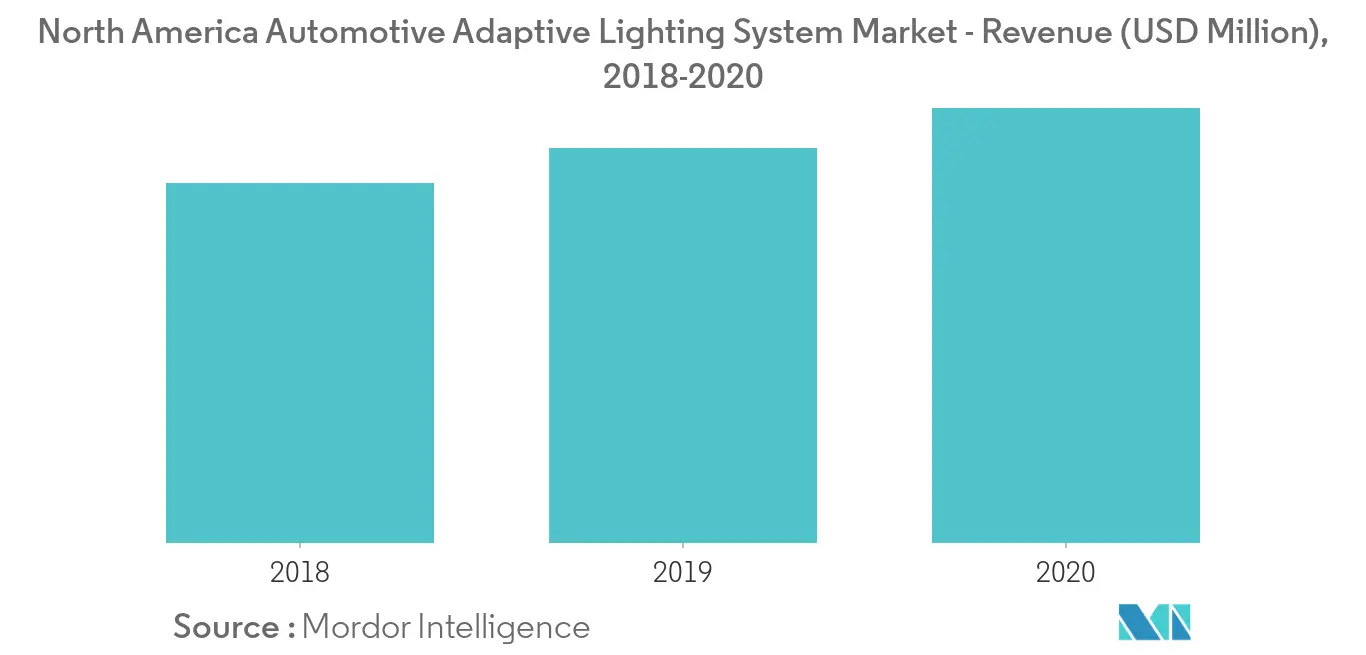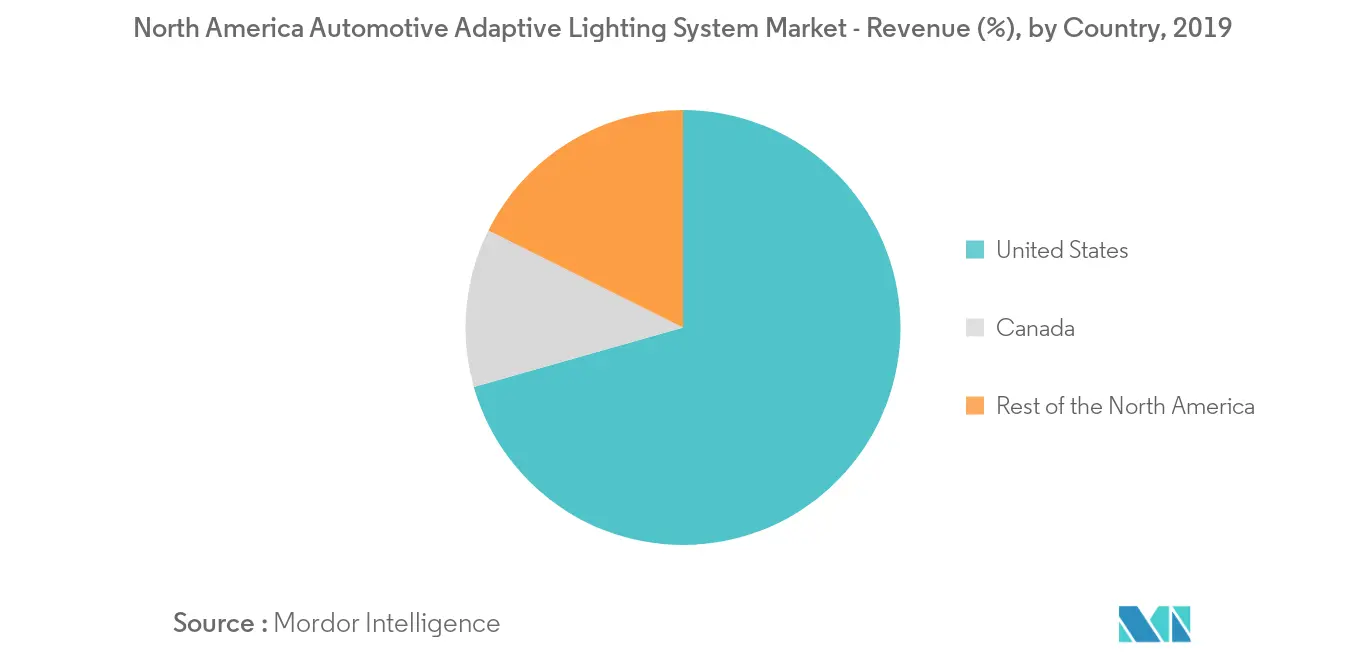Market Trends of North America Automotive Adaptive Lighting System Industry
This section covers the major market trends shaping the North America Automotive Adaptive Lighting System Market according to our research experts:
Front lightening will lead the market.
The system provides the optimized vision to the driver during the night and other poor-sight conditions by adapting the headlight angle and providing the required intensity of the light. These systems emit white or amber light in the countries of the region, unlike other countries where white is the mandated color for automotive lighting systems.
There is a controller in most of the Adaptive Front Lighting System (AFLS) module which contains the circuits and controls all the features of the AFLS. Some of the AFLS modules use On-Board Diagnostics (OBD) and communicates with other modules in the vehicle using the Controller Area Network (CAN) data bus. The AFLS module is also Local Interface Network (LIN) master nodes which communicate with the stepper motors in the lamp unit.
ALS are previously only been part of luxury or high-end vehicles, but now many entry-level vehicle models have the feature of automatically switching between the beams when they detect oncoming traffic. For instance, Ford Focus comes with the optional adaptive front lighting system that can detect road markings and speed signs ahead, which accordingly adjusts the width and length of the beam along with that it prevents the dazzling of other drivers by diverting the direction of the light beam away from oncoming traffic with the help of glare-free high beam function.

The United States is Anticipated to hold major share in the Market
North America is dominated by several global car manufacturers in which the United States leads the regional market with around 2.5 million units being produced in 2019. Car manufacturers have their own mechanism of adaptive lighting, but the most important role in this system. For instance,
General Motors Adaptive Forward Lighting (AFL), improves forward visibility by rotating the headlamps in accordance with the direction of the steering wheel. When the vehicle headed towards a curve or turning around a corner, the headlamps can rotate up to 15 degrees, depending on the intensity of the curve and the cruising speed of the vehicle.
Whereas, Ford's Advanced Front Lighting System is able to widen the beam at junctions and traffic circles to better illuminate hazards that are not in the direction of travel. Ford's slighting technology keeps the driver's attention towards pedestrians, cyclists, and animals in or off the road.
Similarly, in Hella adaptive headlight systems, the company's VarioX® module is combined with a swiveling module. In the combination in between the light source and the lens, there is a cylinder that can be rotated in its longitudinal axis. The outer surfaces of the cylinder generate different light distributions on the road and the stepper motor turns the cylinder to the required position within milliseconds.
Whereas, BMW Adaptive Headlights comes with optional glare-free High Beam Assist which controls the main beam of the headlights for proper illumination of the road. In this system, an image sensor that is inside the front mirror looks after the lighting conditions and the traffic ahead up to a distance of 400 meters.


